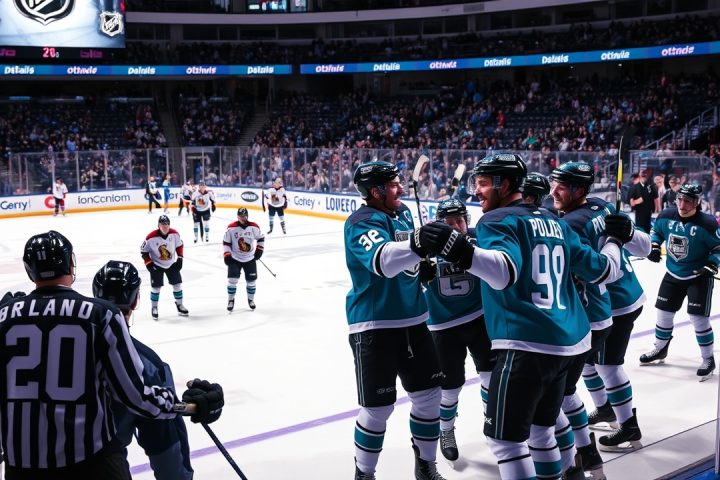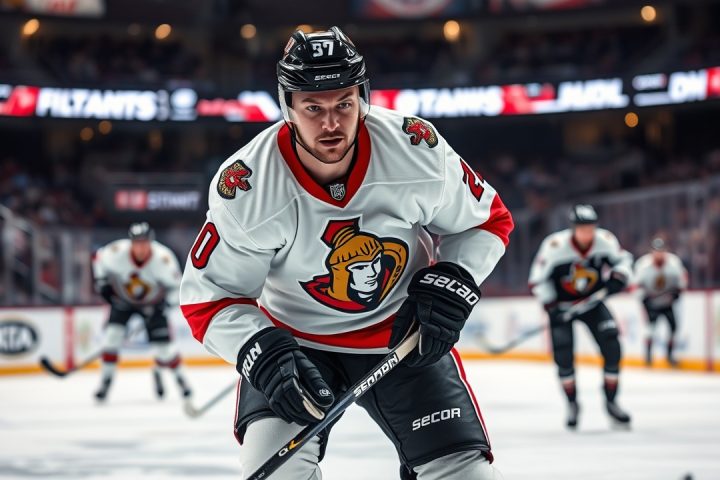Detroit Red Wings Acquire John Gibson
In a strategic move to bolster their goaltending lineup, the Detroit Red Wings have secured veteran netminder John Gibson from the Anaheim Ducks, marking their first significant off-season maneuver heading into the 2025 NHL season. The deal, which was finalized on Saturday, involves sending a fourth-round pick in 2026, a second-round pick in 2027, and veteran Petr Mrázek back to Anaheim.
Gibson’s Career Overview
Gibson, who has been with the Ducks for his entire 12-year NHL career after being drafted 39th overall in 2011, has established himself as a prominent presence in goal, having previously finished in the top ten for the Vezina Trophy on two occasions. However, his recent seasons have depicted a decline in performance—especially as the Ducks have undergone a challenging rebuilding phase. In the last two seasons, his save percentages fell below the .900 mark, although he made a significant rebound with a .911 save percentage this past year despite only featuring in 29 games.
Detroit’s Goaltending Challenges
This acquisition comes against the backdrop of Detroit’s ongoing struggle to find consistency in the crease. Over the past few years, the franchise has cycled through several goaltenders including Alex Nedeljkovic, Ville Husso, Thomas Greiss, Alex Lyon, and Cam Talbot, with mixed results. While Gibson’s recent statistics may reflect a decline, he still managed to achieve an impressive 11.71 goals saved above expected (GSAx), positioning him ahead of Talbot in NHL rankings.
Expectations and Future Potential
As Gibson joins the Red Wings, expectations will be focused on his ability to reclaim a greater share of the workload. With a cap hit of $6.4 million for the next two seasons, it remains to be seen if he can revert to the form that once made him a Jennings Trophy winner. Following a year in which he served as a backup behind scout Lukáš Dostál, Gibson will likely need to manage an increased responsibility to live up to his contract and previous accolades.
Gibson’s Legacy and Recent Performance
His history is notable; Gibson won 204 games with a solid .910 save percentage, 2.89 goals-against average, and recorded a total of 24 shutouts—a legacy that almost saw him surpass Jean-Sébastien Giguère’s franchise record of 206 wins. Over the years, he showcased remarkable potential, earning All-Star selections and the Jennings Trophy alongside Frederik Andersen early in his career. However, the past several seasons saw him struggling through extensive losses, a challenge compounded by the Ducks’ shift toward a younger roster.
Strategic Implications for Both Teams
This trade represents a significant aspect of the Ducks’ offseason strategy orchestrated by general manager Pat Verbeek, preceding deals which included the trades of star player Trevor Zegras and power forward Chris Kreider. As the Ducks continue to reshape their team dynamics, they incentivized the Red Wings with Gibson’s improving form from last season, during which he achieved a .911 save percentage and a 2.77 goals-against average.
Conclusion
For Detroit, the risk is comparatively low considering Mrázek’s outgoing contract of $4.25 million, leaving them ample salary cap space to further enhance their roster as they aim to break a lengthy nine-year playoff drought. While the full extent of Gibson’s potential at this stage in his career remains uncertain, the acquisition suggests they are optimistic about his ability to evolve into a formidable starting goaltender once again.
Gibson will turn 32 in the coming weeks, and fans and analysts alike will be watchful of how well he can adapt to his new environment and whether he can sustain his recent improvement in performance. The Red Wings are certainly taking a chance on his potential to stabilize their goaltending issues as they seek to return to competitive form in the NHL.




